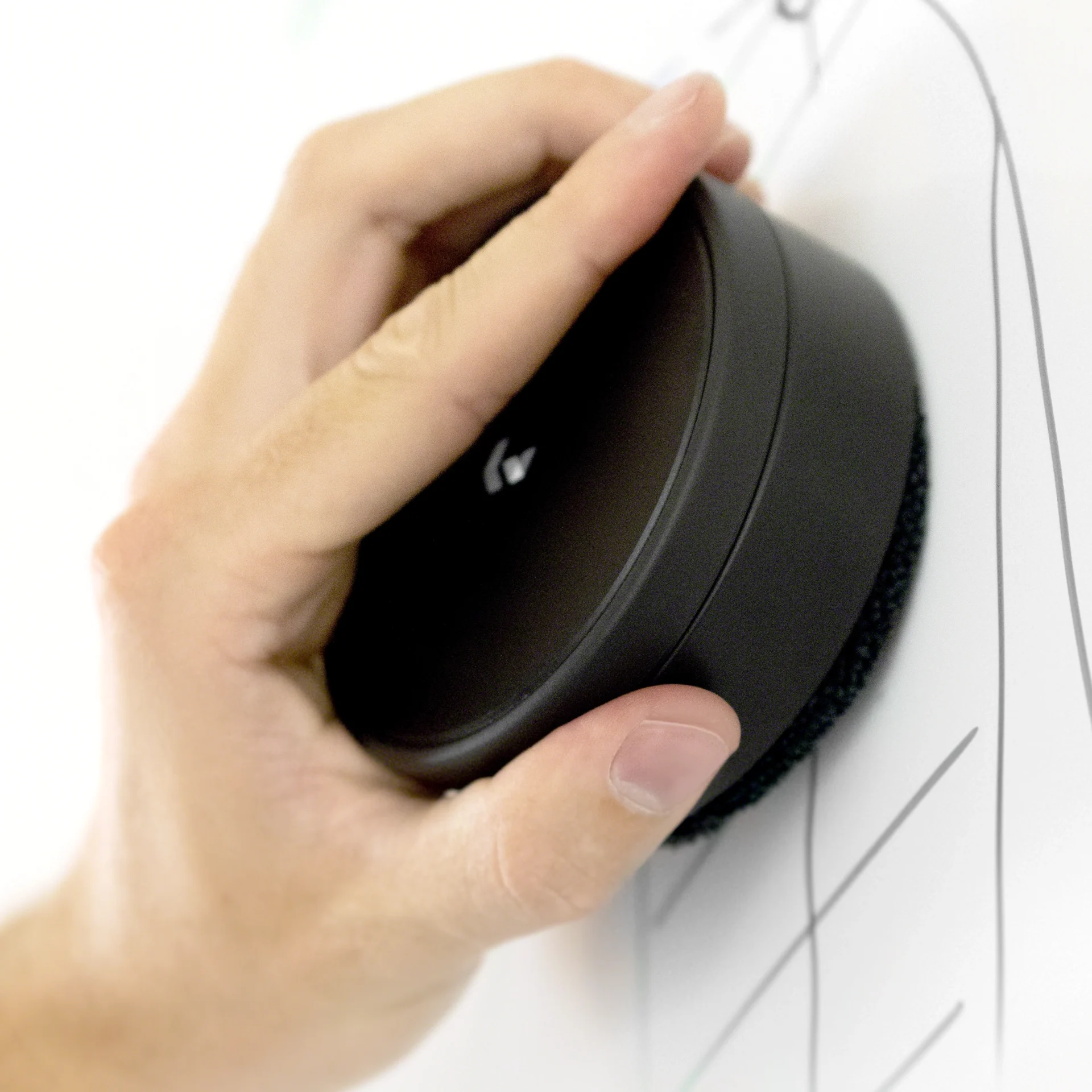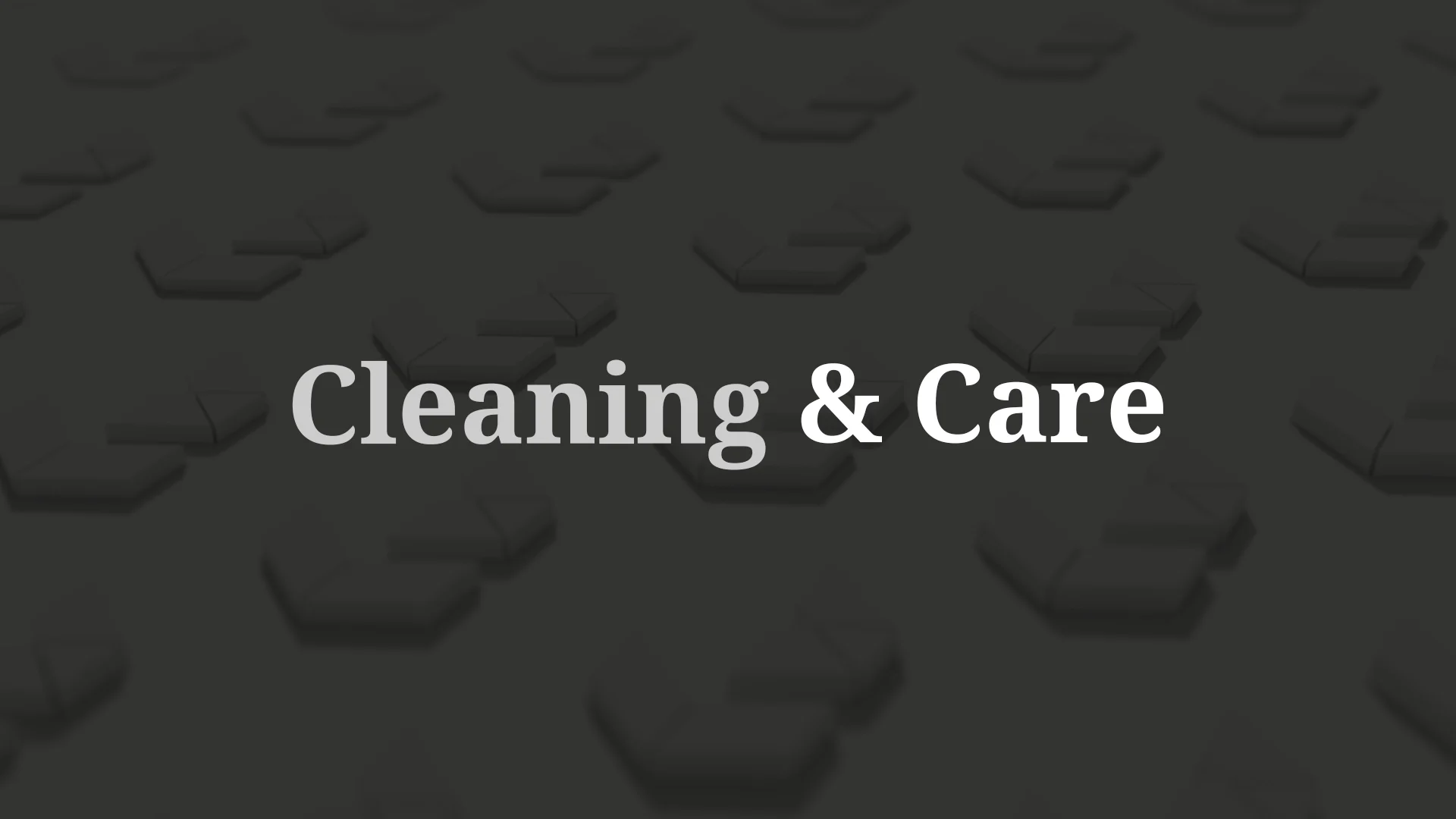
If present, remove the protective film.

Wipe the board with a clean microfiber cloth moistened with a mix of isopropyl alcohol and water (30/70) **
In most cases, water will clean the surface is just fine.

Rinse the surface with water and a clean cloth.

Wipe the surface dry with a clean cloth.
Cleaning frequency depends on the intensity with which the writing surface is being used. Daily or at the very least weekly cleaning is recommended.
** Using an inappropriate cleaner may result in poor dry eraseability due to the buildup of residues from the cleaner on the surface.


Rinse well with clean water, as soap residues on the surface will result in decreased dry erase-ability.


If present, remove the protective film.
1. Chalk the surface using the long side of the chalk.
2. Erase the board with a latex or felt eraser.
3. Keep the erasers dry and clean.
4. Clean the surface with clean, warm water.
5. Rinse well with clean water and strip/wipe the surface.
6. Allow the surface to dry before use.
1. Erase the board with a latex or felt eraser.
Keep the erasers dry and clean them regularly.
2. Clean the surface with clean, warm water.
3. Rinse well with clean water and strip/wipe the surface with a good
window stripper/squeegee. Allow the surface to dry completely before use.
NOTE: Boards used moderately should be cleaned two to three times a week.
Boards used more intensely may require daily cleaning.
1. Clean the surface with clean, warm water. (Use 5% Extran MA 02 or phosphate-containing cleaner in water and rub well with a kitchen sponge when necessary.)
2. Rinse well with clean water and strip/wipe the surface with a good window stripper/squeegee. Allow the surface to dry completely before use.
NOTE: To determine if your board’s surface is Polyvision’s e3 CeramicSteel, scratch a small, hidden area of the board with a sharp object, such as a key.
Polyvision e3 surfaces resist this test, while painted surfaces are easily scratched and damaged.

FINISH CLEANING : Rinse thoroughly with clean water and wipe dry as needed.
FINISH CLEANING : Rinse thoroughly with clean water and wipe dry as needed.
FINISH CLEANING : Rinse thoroughly with clean water and wipe dry as needed.
FINISH CLEANING : Rinse thoroughly with clean water and wipe dry as needed.
FINISH CLEANING : Rinse thoroughly with clean water and wipe dry as needed.
FINISH CLEANING : Rinse thoroughly with clean water and wipe dry as needed.
FINISH CLEANING : Rinse thoroughly with clean water and wipe dry as needed.
Moisten a clean cloth, soft paper towel, or clean synthetic sponge with a mild detergent or glass cleaner and wipe the board in a circular motion.
Wipe the surface dry with a clean cloth.
DO NOT clean the glass when it’s hot or in direct sunlight. Allow water or cleaning residue to remain on the glass surface. Use abrasive cleaning solutions or materials for maintenance cleaning. Allow the metal parts of the cleaning equipment to contact the glass. Use razor blades on glass surfaces.
The surface is not intended for writing purposes. Avoid marking on the surface with writing tools.
Only clean with water-based or solvent-based cleaners. Do not saturate.
NOTE: Fabrics have been developed to withstand regular cleaning, maintenance, and disinfection. Please follow the manufacturer’s instructions on cleaning and disinfection agents. We recommend spot-testing on an inconspicuous part of the material first. Fabric samples are available for testing by contacting
The surface is not intended for writing purposes. Avoid marking on the surface with writing tools.
1. Vacuum to remove dust.
2. Remove spills immediately using a clean, damp cloth or with soap and water.
3. Repeat using only clean water, then pat dry with a lint-free cloth. Avoid using wax polishes, solvents, or concentrated abrasives. Carpet and fabric cleaners can be used.
4. Blot excess spills from the material as quickly as possible.
5. Wipe with a damp cloth. If stains persist, apply small amounts of carpet cleaner mixed with water on a damp cloth.
6. Blot well after each application. For more difficult stains, damp a soft white cloth with a diluted bleach solution (10% bleach / 90% water). Dab gently.
7. Repeat using only a clean, water-dampened cloth to remove bleach concentration. Pat dry with a lint-free cloth.

